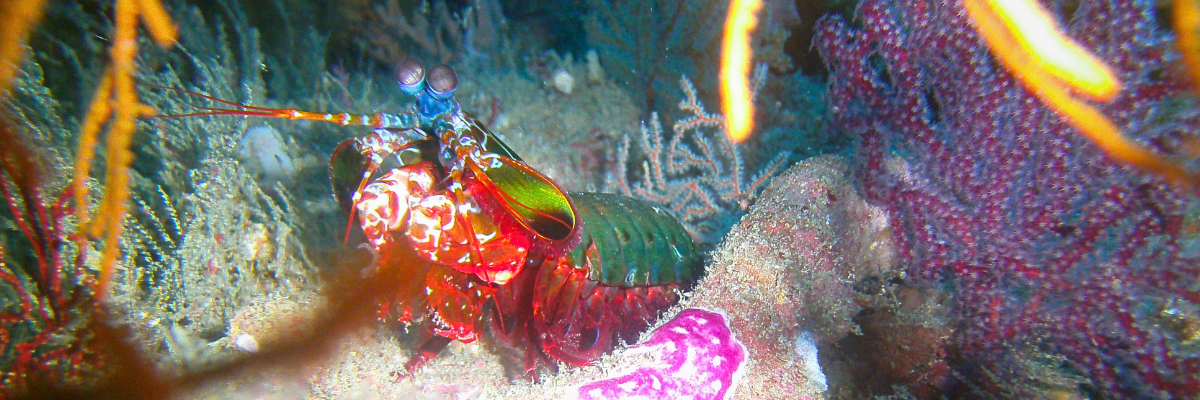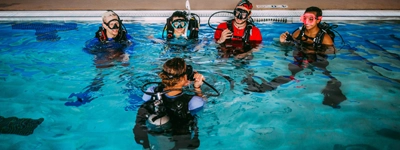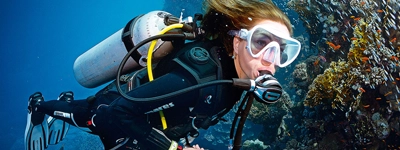
Mantis shrimps are wonderful and powerful creatures of the sea. As divers, we often hear stories about their strength—and they’re not exaggerations. Their biology is nothing short of impressive.
The Mantis Shrimp has the fastest punch in the animal kingdom! They can execute a strike in under three-thousandths of a second, according to National Geographic. That’s fast—and powerful. The strike has been compared to the speed of a .22 caliber bullet. That kind of strength is capable of breaking snail shells, cracking glass, and even possibly fracturing the bones of other sea creatures. Because of the incredible speed and force of a mantis shrimp’s strike, the water around the impact zone can boil. This process, known as cavitation, forms tiny air bubbles that collapse with such intensity they create a shockwave strong enough to stun or kill prey—giving the mantis shrimp an added advantage.

Even more remarkably, when those bubbles collapse, they can emit a tiny flash of light. This rare effect, called sonoluminescence, results from the extreme pressure and heat generated by the strike—another example of the mantis shrimp’s extraordinary abilities packed into one powerful little predator. Pretty incredible for such a small creature.
Mantis shrimps are carnivorous marine crustaceans belonging to the order Stomatopoda. These fascinating creatures branched off from other members of the class Malacostraca around 400 million years ago. According to the Great Barrier Reef Foundation, there are over 450 species of mantis shrimp, all in a variety of different colors.

The Peacock Mantis Shrimp is especially well known for its vibrant rainbow colors. Another standout species is the Zebra Mantis Shrimp, which may be the largest of them all—growing up to 40 cm (16 inches). Despite their beauty, mantis shrimp are difficult to keep in captivity due to their aggressive, predatory nature.
Sustainable Seafood Starts with Awareness
As ocean lovers, we don’t just admire marine life—we care about protecting it. That’s why it’s important to understand how certain industries, like shrimping, can impact the health of our oceans. While shrimp is a staple in diets around the world, some harvesting practices—particularly in the wild—can harm sensitive ecosystems and contribute to overfishing.
We’re not here to tell you what to eat, but we do encourage you to stay curious and informed. Learning more about where your food comes from is a great first step in supporting ocean conservation. One resource we recommend is this article from Monterey Bay Aquarium: Sustainable Shrimp Guide
Every bit of awareness makes a difference—especially when it helps protect the underwater world, we all love to explore. So divers, do your research on where you might spot these or other amazing ocean animals. Stay observant, give them space, and most importantly—remember the diver’s mantra: “Take only pictures, savor the memories, and leave only bubbles.”















